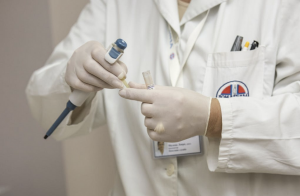It is a cold, hard fact: the American population is growing older. Today, there are more than 46 million Americans over the age of 65 and a 2018 U.S. Census Bureau Report said that in 2035, “there will be 78.0 million people 65 years and older compared to 76.4 million under the age of 18.”
This is mainly because the last of the baby boomer generation will reach the age of 65 between 2020 and 2030, which means that 1 in 5 Americans will be an elderly by 2030. This number is even set to balloon by up to 90 million by 2050 and for the first time in history, there will be older people than younger ones.
While ageing is a natural process in the human life cycle, it also comes with a series of medical conditions that are mostly progressive and can affect an individual’s capability to perform activities of daily living and even care for himself.
That is why long-term care facilities are needed now more than ever and with that also comes the need for a fully functional long-term care pharmacy that will help guarantee the quality of medications given to patients suffering from these chronic health conditions and ensure their compliance to the treatment plan.
Understanding long-term care and long-term care pharmacies
If you are one of those who would like to answer the growing demand for a long-term care pharmacy, it’s very important to understand the premise of long-term care and long-term care facilities as well as the roles and responsibilities of a long-term care pharmacist.
What is long-term care?
In its essence, long-term care encompasses a wide variety of services that cater to the healthcare and personal care needs of individuals who may not be able to care for themselves because of their disability or the complications of their health condition.
The main goal of long-term care is to offer individualized and patient-centered services that help a patient stay as independent as possible, maximize quality of life and meet the patient’s needs over a period of time.
While a good percentage of patients needing long-term care are part of the elderly population, long-term care also caters to patients from all ages who are affected with disabling health conditions over an extended period of time.
What are long-term care facilities?
A long-term care facility generally provides skilled nursing care and restorative and rehabilitative services aimed at helping patients in need of assistance with activities of daily living and compliance with their treatment plan. Long-term care facilities are usually composed of nursing homes, assisted living facilities and skilled nursing facilities.
As of 2016, 63% of long-term care facilities in the United States are hospice care providers and a good 99.5% of nursing homes offer therapeutic services for patients.
More than one million people reside in assisted living facilities in the United States and each year, over 4 million Americans are admitted or recommended to reside in skilled nursing facilities or nursing homes.
What is a long-term care pharmacy?
The idea of a long-term care pharmacy goes back to the time when apothecaries played an important role in addressing health issues within communities. Before there were clinics, urgent care centers and hospitals, most people relied heavily on pharmacists to help diagnose and provide the right medications for common ailments.
Today, other healthcare facilities have fulfilled this role, but in terms of long-term care, the idea of having a long-term care pharmacy still follows the same premise as the traditional apothecary and the role of a long-term pharmacist is still as significant as before.
This is due to the increasing demand for quality healthcare in long-term care facilities as the elderly population grows and the number of chronic progressive diseases is becoming a bigger concern for the entire healthcare system.
In general, a long-term care pharmacy could take over some of the roles of a physician, especially when it comes to monitoring the conditions of individuals in long-term care facilities and regulating the dispensing of medications to maintain proper compliance. In fact, the two major roles of long-term care pharmacists are to help in the actual dispensing of long-term medications and serve as consultants in the proper use of these medications.
What are the benefits of a long-term care pharmacy?
Compared to a regular pharmacy, a long-term care pharmacy is especially beneficial to patients requiring long-term care with a consistent drug protocol. This includes the elderly and individuals who have chronic blood conditions, cancers and autoimmune diseases.
A long-term care pharmacy does more than just dispense medication. Since a long-term care pharmacist is able to establish a strong relationship with a patient, he can take on some of the responsibilities of a primary care physician, especially in terms of monitoring the compliance of a patient to his treatment plan.
Patients requiring long-term care can benefit from having a long-term care pharmacy as a service provider and a dispensary for medications.
Where can you find a long-term care pharmacy?
A long-term care pharmacy is generally found in long-term care facilities and nursing homes. But any pharmacy can also be a long-term care pharmacy depending on its managing business plan and the type of specialized services that it offers.
Long-term care pharmacies can also be found in mental institutions, rehabilitation centers, correctional institutions, hospice care, adult day care and even ambulatory and urgent care facilities. As of 2016, 97.2% of nursing homes have pharmacies or pharmacist services.
What are the duties of a long-term care pharmacy?
A regular pharmacy simply files incoming prescriptions, dispenses medications and acts as a mediator between the patient and doctor. But a long-term care pharmacy goes beyond the responsibility of appropriately dispensing prescription drugs in long-term care facilities under PDPs and MA-PD plans. It could also offering services that are not usually available in a regular pharmacy.
A long-term care pharmacy usually has a bigger inventory since it caters to the long-term needs of patients and it could also have several laboratory equipment and supplies. It also does drug research and reviews the drug regimen of patients, offers clinical visits and reviews medical records, and provides counseling to patients undergoing long-term care to ensure their compliance to the treatment plan.
A long-term care pharmacy could also help monitor a patient’s condition and response to medications, provide nutritional support services and offers IV therapy, fitting for surgical appliances and provisions for medical equipment.
As a care-centered practice, a long-term care pharmacy can also perform these additional services:
-
- Quality assurance programs for medications and delivery of care
- Assessment and evaluation of drug information
- Medication delivery systems
- Patient education programs, forms and reports
- Proper packaging of medication to ensure patient compliance
- Diagnostic services and laboratory testing
What is a long-term care pharmacist?
A long-term care pharmacist plays a vital role in the function of a long-term care pharmacy since he provides care and ongoing support to patients who are admitted or treated over long periods of time. These patients may be in rehabilitation facilities, skilled nursing centers and nursing homes.
Since a long-term care pharmacy usually caters to an ageing demographic, a long-term pharmacist usually deals with elderly patients who need treatment for specific diseases. He will be responsible for ensuring proper dosage requirements, compliance with drug therapy regimens, advising with drug interactions and helping patients make formulary decisions.
What does it take to become a long-term care pharmacist?
The minimum requirement for becoming a pharmacist in a long-term care pharmacy is a degree in Pharm.D with training in a long-term care setting. The successful completion of an undergraduate course will help a student prepare for pharmacy school and increase the chance of success during his advanced pharmacy course and in obtaining a doctorate degree.
Pharmacy school usually takes for years to complete and will cover the different aspects of medication and medical therapies including its uses, interactions and sciences.
After completion of pharmacy school, a state licensure is required and if a professional wishes to work as a long-term care pharmacist or start a long-term care pharmacy, some on-the-job experience may be required.
The average annual salary of a long-term care pharmacist in the United States is $116,000. This pay rate is based on experience, length of service, the responsibilities involved and the location of the long-term care pharmacy. A long term-care pharmacist may also enjoy benefits like a 401(k) and other compensation programs, health insurance, vision, dental and prescription coverage, bonuses and continuing education reimbursement.
What are the new rules of Medicare for long-term care pharmacies?
Medicare doesn’t cover any type of long-term care, but it may offer coverage for medical services rendered in long-term care settings such as nursing homes and assisted living facilities. Medicare also provides coverage for short-term stays in skilled nursing facilities given that the patient has been admitted for at least three days in a regular hospital.
But since Medicare and Medicaid programs still cover medications, recent additions to Medicare long-term care pharmacy rules put more responsibility on pharmacists in a long-term care pharmacy setting.
This rule from the Centers for Medicare and Medicaid Services (CMS) still follows the same requirement for a monthly drug-regimen review (DRR) but it requires an additional simultaneous review of a patient’s medical chart.
Both these requirements are stated in the new pharmacy services section of the nursing home rules, which also includes the restrictions of the use of psychotropic medications that are often overused in nursing homes. According to Khristy McClelland, the President of Guardian Pharmacy in Jacksonville, Florida, “the new regulation expands pharmacist services, and in many cases will increase the costs to provide these services.”
McClelland acknowledges that there are barriers that inhibit pharmacists from accessing medical charts and medical administration records that are routinely reviewed during DRRs. “In order to maintain compliance with the new regulations, facilities will have to ensure that pharmacists have access to these records,” she added.
It’s also very important for facilities to have proper reporting procedures for pharmacists that will be helpful when an issue needs immediate action based on a DRR. This new rule also cites provisions that are aimed at improving the speed and quality of the services provided in long-term care facilities and reduces avoidable hospital re-admissions.
These additional provisions will add more weight to the tasks of pharmacists working in a long-term care pharmacy setting. For instance, all long-term care facilities will be required to develop, implement and maintain an effective assurance and performance improvement program to help patients get the best outcomes of care and improve their quality of life.
They also need to develop and implement a baseline care plan for each resident within 48 hours of his admission. This care plan should include instructions that will help ensure patient-centered effective care that meets professional healthcare standards.
Long-term care facilities will also be required to develop an infection prevention and control program, especially since infections are prevalent in a lot of these facilities and would require proper dispensing of medications from a long-term care pharmacy.
What is the future of long-term care pharmacies?
The demand for an efficient long-term care pharmacy in different long-term care facilities will continue to grow as the population ages. As the government pushes to improve the quality of care offered to patients admitted in long-term care facilities, the role of long-term care pharmacists as one of the primary members of the healthcare team will also continue to expand.
There is a lot to learn about running a long-term care pharmacy—from the growing list of responsibilities to the new provisions implemented by Medicare—but it’s all for the benefit of elderly patients who deserve the best care as they battle through chronic and often progressive medical conditions.








